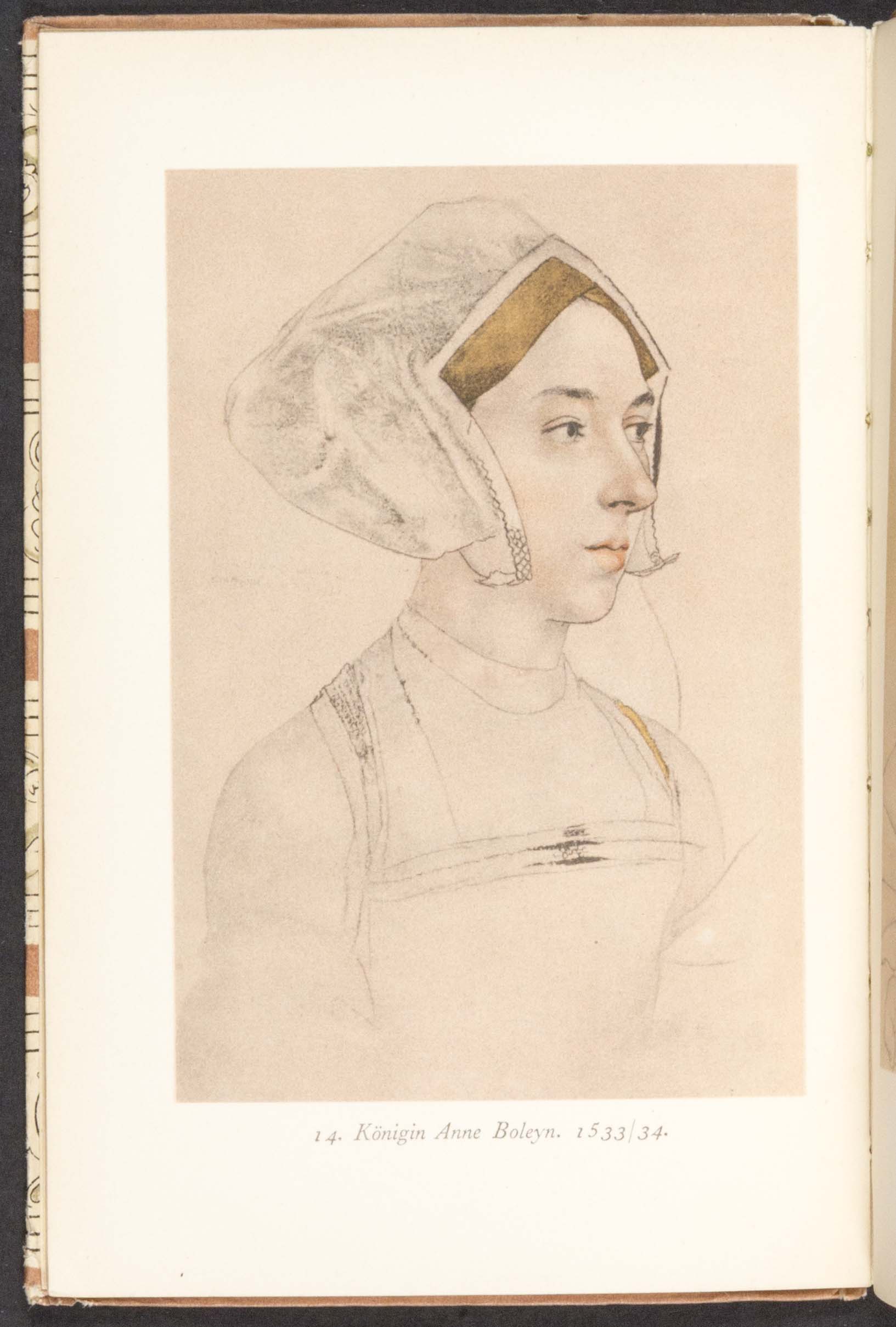
Leipzig: Insel, [1938]
VLkP HOL
The Reformation saw a shift away from religious art in Protestant countries, with less emphasis than before on Mary (for example, portrayals of the Immaculate Conception and the Annunciation of the Virgin), the saints, large set-piece scenes from the Bible, such as the Passion, and popes and senior clergy. A fall in ecclesiastical patronage led artists to diversify into secular types of art, such as history painting, genre painting, still lifes, and—the area for which Hans Holbein is best known—portraiture. Hans Holbein the Younger (1497/8-1543), court painter for Henry VIII from 1535, provided well-known visual records of some of the key players in the English Reformation, among them Sir Thomas More, Thomas Cranmer, Henry VIII’s wives, and Henry VIII himself, alongside other courtiers and other London dwellers, including several German Hanseatic merchants. Whilst religious painting was permitted under Henry VIII (unlike Edward VI and Elizabeth), a lack of competent portrait painters in England resulted in a demand for contemporary portraits from Holbein, to the virtual exclusion of the other genres he had formerly practised.